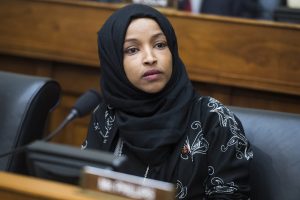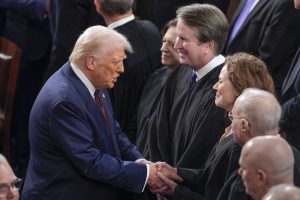President Donald Trump is facing heightened scrutiny as public perception of his administration continues to evolve amid a series of complex domestic and economic challenges. Since beginning his second term in January 2025, the president’s policies and leadership style have increasingly become a focus of debate among voters, analysts, and political commentators. A combination of ongoing federal shutdowns, economic uncertainty, and controversial policy decisions have placed the administration under intense public and media examination.
Trump entered the second term with a significant base of support, reflecting optimism among certain segments of the electorate about his ability to navigate the United States through domestic and international challenges. Early in the year, polling data indicated that a plurality of Americans expressed approval of his approach to governance. However, as the months progressed, a combination of political controversies, economic stressors, and government operational disruptions contributed to a decline in overall confidence.
The federal government’s operations have become a particularly visible concern. With what may become the longest shutdown in U.S. history, millions of Americans have experienced direct and indirect impacts on public services. Federal employees face unpaid furloughs, delays in essential services, and uncertainty regarding benefits, while ordinary citizens have encountered disruptions in critical government functions. Political analysts argue that extended interruptions in government operations often increase public scrutiny of executive leadership, placing additional pressure on elected officials to resolve crises swiftly.
Economic challenges have amplified public concerns. Rising costs of living, inflationary pressures, and disruptions in key sectors such as manufacturing and agriculture have heightened awareness of the administration’s policy impact. Trade policies, including tariffs and regulatory changes, have created ripple effects across rural communities and industrial hubs, resulting in job losses, production slowdowns, and overall uncertainty. Many Americans are closely evaluating how executive decisions affect household finances, economic stability, and opportunities for employment.
Midway through this unfolding political and economic landscape, a CNN/SSRS survey conducted among 1,245 adults from October 27 to October 30 offers insight into public sentiment. The survey revealed nuanced perspectives about the president’s leadership, policies, and priorities. Among respondents, a significant proportion indicated concern over the nation’s trajectory, citing economic conditions and the state of American democracy as pressing issues.
The survey found that 68% of respondents felt that things in the country were going “pretty badly” or “very badly,” while 32% reported that conditions were “very” or “fairly well.” Regarding the economy, 47% identified economic stability and cost of living as the most critical issue facing the country. Democracy and governance were cited as a priority by 26% of respondents, while only 10% noted immigration as a top concern — a stark contrast to the administration’s policy emphasis on intensified immigration enforcement, refugee caps, and ICE operations. Crime and safety, which have been a central theme of Trump’s public messaging, were listed as a primary concern by merely 7% of respondents.
The survey also revealed significant skepticism regarding the administration’s economic policies. Only 27% of respondents believed that Trump’s policies improved economic conditions, while 61% felt that these policies had a negative impact. A smaller segment, 12%, expressed the view that the administration’s economic interventions had no discernible effect. These findings reflect growing discontent in rural and industrial communities affected by trade disruptions, tariff-driven slowdowns, and layoffs.
Foreign policy perceptions also contributed to the overall assessment of the administration. While some Americans felt that Trump’s international strategies strengthened the country’s global standing, a larger proportion disagreed, citing concerns about the administration’s unilateral military actions, trade negotiations, and diplomacy. The president’s claim of ending eight wars within eight months has been met with a mix of skepticism and debate, as analysts weigh both strategic achievements and broader international implications.
Beyond policy considerations, the survey highlighted public attitudes regarding the use of presidential power. A majority of respondents, 61%, expressed concern that the president has exceeded appropriate limits of executive authority. Actions including authorizing military strikes without congressional approval, deploying federal and National Guard troops despite opposition from state officials, and issuing executive orders that altered the structure and accountability of regulatory agencies have intensified scrutiny. Only 31% of respondents indicated that the president’s use of power has been appropriate, while 9% believed it has been insufficient. Legal experts have warned that such consolidation of authority risks creating precedents that could challenge democratic norms and checks and balances.
The political implications of these concerns are already evident. With midterm elections approaching in November 2026, voters are increasingly considering congressional races through the lens of presidential performance. According to the survey, 41% of respondents said their vote would serve as a signal of opposition to Trump, while 21% indicated that their vote would express support for the president. The remaining 38% viewed their vote as unrelated to presidential approval. These findings underscore the significant influence of national leadership perception on local and regional elections and demonstrate the potential electoral consequences of declining public confidence.
Trump’s focus on law enforcement, crime reduction, and immigration continues to define his domestic agenda. Yet public opinion indicates that these priorities may not align with the most urgent concerns of the electorate. Economic pressures, governance effectiveness, and institutional accountability appear to resonate more strongly with many Americans, creating a gap between administrative emphasis and voter priorities. This divergence presents both challenges and opportunities for the administration as it seeks to maintain support while advancing its policy goals.
Analysts have noted that effective communication and responsiveness will be critical for the administration in addressing public concerns. The interplay of policy implementation and public perception suggests that the administration’s ability to articulate policy outcomes, manage crises, and demonstrate responsiveness to citizen needs could influence approval levels and political capital in the months leading to the midterm elections.
At the same time, experts emphasize that broader societal factors, including economic security, access to essential services, and institutional integrity, continue to shape public attitudes toward the presidency. The combination of practical governance issues, symbolic political messaging, and public evaluation of leadership effectiveness has created an environment in which executive decisions are scrutinized intensely. Political observers highlight that sustained engagement with public concerns, transparency, and targeted policy adjustments will be central to rebuilding or maintaining public trust.
The administration’s handling of federal operations, particularly the prolonged government shutdown, has become a focal point for both media and public attention. Prolonged shutdowns exacerbate concerns about executive effectiveness, highlighting the tension between political objectives and administrative functionality. Critics argue that delayed services, furloughed employees, and disruptions in social programs undermine confidence in leadership and intensify pressure on policymakers to find resolution.
Trump’s approach to economic policy, particularly regarding tariffs, manufacturing, and trade agreements, continues to draw debate. While the administration emphasizes job creation, economic growth, and domestic industrial support, public perceptions are influenced by the tangible effects of policy on household finances and employment opportunities. In regions where factory layoffs and production slowdowns have occurred, citizens have voiced frustration over perceived disconnects between national rhetoric and local realities.
Foreign policy, too, remains under close scrutiny. The president’s unilateral actions on the international stage, including military interventions and high-profile diplomatic initiatives, have elicited mixed reactions. Some analysts contend that decisive action demonstrates leadership strength, while others express concern over potential long-term consequences for alliances, international stability, and U.S. credibility abroad. These divisions illustrate the complexity of public evaluation, in which policy outcomes, strategic messaging, and perceptions of competence converge.
As the administration navigates these multiple challenges, the broader political context cannot be ignored. Rising concerns over presidential authority, institutional integrity, and the balance of power have prompted legal scholars, policymakers, and citizens to consider the implications of executive decision-making. The survey data and ongoing public discourse suggest that voters are increasingly attentive to governance practices, policy outcomes, and overall national direction, reinforcing the interplay between leadership decisions and democratic accountability.
The coming months will likely serve as a critical period for the administration, with opportunities to address economic concerns, restore confidence in governance, and realign policy priorities with public expectations. Analysts argue that effective crisis management, transparent communication, and responsiveness to citizen needs will be essential components in shaping both short-term approval and long-term political influence.
Ultimately, the challenges facing the administration highlight the multifaceted nature of modern leadership. Balancing policy goals, public expectations, and the operational realities of governance requires strategic planning, clear communication, and attentiveness to both domestic and international implications. The administration’s response to these challenges will not only influence public sentiment in the near term but also shape perceptions of executive effectiveness and political legitimacy for years to come.

Emily Johnson is a critically acclaimed essayist and novelist known for her thought-provoking works centered on feminism, women’s rights, and modern relationships. Born and raised in Portland, Oregon, Emily grew up with a deep love of books, often spending her afternoons at her local library. She went on to study literature and gender studies at UCLA, where she became deeply involved in activism and began publishing essays in campus journals. Her debut essay collection, Voices Unbound, struck a chord with readers nationwide for its fearless exploration of gender dynamics, identity, and the challenges faced by women in contemporary society. Emily later transitioned into fiction, writing novels that balance compelling storytelling with social commentary. Her protagonists are often strong, multidimensional women navigating love, ambition, and the struggles of everyday life, making her a favorite among readers who crave authentic, relatable narratives. Critics praise her ability to merge personal intimacy with universal themes. Off the page, Emily is an advocate for women in publishing, leading workshops that encourage young female writers to embrace their voices. She lives in Seattle with her partner and two rescue cats, where she continues to write, teach, and inspire a new generation of storytellers.









